In the complex landscape of modern property protection, while we often focus on the visible components—the cameras, the motion sensors, and the door contacts—the true brain behind the operation often remains out of the spotlight. This core component is the alarm panel. Far from being just a simple keypad for punching in a code, the contemporary security alarm panel is a sophisticated central command center, managing everything from environmental monitoring to smart home automation. Understanding the capabilities, architecture, and selection criteria of this critical piece of technology is essential for anyone serious about safeguarding their home or business.
This comprehensive guide will delve deep into the world of the alarm panel, exploring its evolution, current functionalities, and predicting where this technology is heading in the age of artificial intelligence and hyper-connectivity.
Contents
- 1 What Exactly Is an Alarm Panel, and Why Is It the System’s Core?
- 2 A Historical Perspective: Evolution of the Security Alarm Panel
- 3 Deep Dive into Alarm Panel Architectures and Types
- 4 Essential Components and Features of a High-Quality Alarm Panel
- 5 Choosing the Right Security Panel for Your Needs
- 6 Installation and Maintenance: Keeping Your Alarm Panel Operational
- 7 The Future of the Alarm Panel: AI, Biometrics, and Predictive Security
- 8 Conclusion: The Unsung Hero of Modern Protection
What Exactly Is an Alarm Panel, and Why Is It the System’s Core?
At its simplest, an alarm panel is the central hub, or controller, of any electronic security system. It acts as the intermediary between the various sensors deployed throughout a property and the outside world (whether that’s a monitoring station, the homeowner’s smartphone, or local authorities). Every signal—a door opening, a window breaking, or even a smoke detector triggering—is routed through and processed by the security system panel. Without it, the system is nothing more than a collection of dormant devices.
The Central Processing Unit (CPU) of Security
Think of the alarm panel as the CPU of your physical security infrastructure. It is responsible for decision-making based on programmed rules. When a sensor reports an event, the panel must instantly decide: Is the system armed? Is this a genuine threat or a false alarm? Which communication pathway should be used to report the incident?
In modern systems, the security system panel is often a sleek, touchscreen interface—a far cry from the beige metal boxes of the past. It provides the user interface necessary to arm and disarm the system, manage user codes, view event logs, and configure settings. This centralized control ensures seamless coordination across all devices, often supporting hundreds of individual sensors and peripherals simultaneously.
Key Functions Beyond Sounding the Siren
While its primary function is managing intrusion detection, the modern alarm panel is a truly multi-functional device. Its responsibilities extend far beyond simply triggering a loud siren.
- Zone Management: It categorizes and tracks the status of every single sensor (or “zone”) in the system, allowing users to partially arm certain areas (e.g., “stay mode”) while leaving others disarmed.
- Communication: It maintains active links to the external world, ready to transmit signals instantly via cellular, IP (internet protocol), or traditional landline connections.
- Power Management: It continuously monitors system power and manages battery backups, ensuring the system remains operational during power outages—a crucial element of reliability.
- Integration Hub: Increasingly, the alarm system panel serves as the central hub for smart home devices, integrating lighting control, thermostats, and automated door locks alongside traditional security functions.
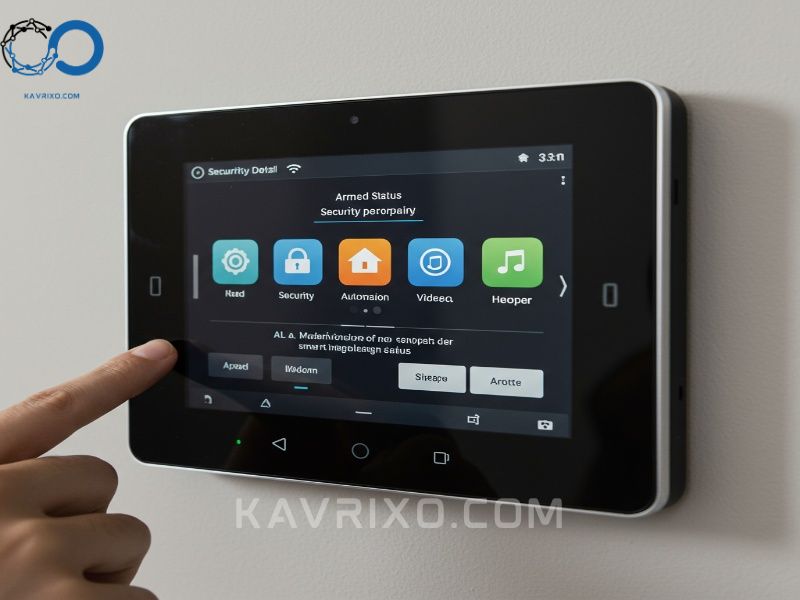
A Historical Perspective: Evolution of the Security Alarm Panel
To appreciate the sophistication of current technology, it’s helpful to glance back at the evolution of the security alarm panel. This journey reflects the broader technological shifts in connectivity and processing power over the last half-century.
From Hardwired Boxes to Interactive Touchscreens
In the mid-to-late 20th century, the typical alarm panel was a large, often unattractive metal enclosure, usually hidden in a closet or basement. These systems were exclusively hardwired. Installation was labor-intensive, requiring professional technicians to run physical wires through walls and ceilings for every single contact point, siren, and keypad. The user interface was usually a separate, small keypad featuring LED lights and often a simple, confusing numerical display.
These early hardwired panels excelled in robustness and signal integrity but lacked flexibility and remote access. Troubleshooting was difficult, and expanding the system meant significant renovation work. The communication pathway was almost always a dedicated landline phone connection (POTS), making them vulnerable to “line cutting” by savvy intruders.
The Shift to Wireless and IoT Integration
The true revolution began with the widespread adoption of reliable wireless technology in the 1990s and 2000s. Wireless sensors drastically reduced installation time and complexity, opening the door for the rise of the DIY security market.
However, the major leap came with the integration of cellular communication (GSM/CDMA) and Internet Protocol (IP) connectivity directly into the alarm panel. This eliminated reliance on vulnerable landlines and paved the way for remote management via mobile apps.
Today’s security alarm panel is often a self-contained unit, integrating the CPU, communication modules, and user interface into a single, aesthetically pleasing device. This shift has turned the panel from a hidden utility box into an accessible, interactive home management tool, deeply intertwined with the Internet of Things (IoT).

Deep Dive into Alarm Panel Architectures and Types
When selecting a security system, one of the most fundamental decisions revolves around the architecture of the security panel. Different architectural styles suit different property types, budgets, and levels of technical expertise.
Traditional Hardwired Panels: Reliability and Complexity
Despite the dominance of wireless technology, hardwired systems still hold a significant place, particularly in large commercial environments, industrial complexes, or custom new builds where reliability and resilience are paramount.
Pros:
* Signal Integrity: Wires are less susceptible to radio frequency (RF) interference or jamming than wireless signals.
* Power Efficiency: Sensors are often powered directly by the main alarm panel, eliminating the need for frequent battery replacement in peripheral devices.
* Durability: The components are typically more robust and designed for long-term, continuous operation.
Cons:
* Installation Cost: Extremely high labor costs due to the need for running extensive cabling.
* Lack of Flexibility: Difficult and expensive to relocate sensors or expand the system after initial installation.
The hardwired security panel requires careful planning, but for environments where security downtime is catastrophic, it remains the gold standard for dedicated, non-integrated security functions.
Wireless and Hybrid Alarm System Panels
The vast majority of residential and small to medium business installations today utilize wireless or hybrid technology.
Wireless Panels: These systems rely entirely on proprietary radio frequencies (usually 300-900 MHz) for communication between the panel and the sensors. They are incredibly easy to install (often suitable for DIY setup) and highly flexible. The main drawback is the ongoing maintenance related to battery life in sensors.
Hybrid Panels: These offer the best of both worlds. The main alarm system panel itself might be wireless, communicating via Wi-Fi and cellular, but it includes hardwired input zones (terminals) for high-traffic or critical devices (like primary sirens or power-hungry sensors). This allows installers to wire the most crucial components while utilizing wireless technology for convenience in remote areas. Hybrid panels are often recommended for properties where some pre-existing wiring exists or where resilience is a top priority without sacrificing modern features.
Self-Contained vs. Separate Keypad Designs
The physical form factor of the security panel dictates user interaction and placement:
- Self-Contained Panels (All-in-One): The user interface (keypad/touchscreen), the main CPU, the siren, and the communication modules are all housed in one unit. These are common in modern wireless systems (e.g., SimpliSafe, Ring Alarm Pro). They are aesthetically pleasing and simplify installation, but if the main panel is compromised, the entire system is disabled.
- Separate Keypad Panels: The core processing unit (the “brain”) is hidden in a secure location (like a closet or attic), and the user interacts with the system via remote keypads connected by wire or RF. This is typical of traditional hardwired systems or high-security commercial setups, as it protects the core intelligence of the security panel from being physically attacked by an intruder upon entry.
Essential Components and Features of a High-Quality Alarm Panel
Selecting a high-quality security system panel requires moving beyond basic functionality and evaluating the critical features that determine reliability, usability, and future compatibility.
Communication Pathways: Cellular, Wi-Fi, and Landline Backup
Reliable communication is the single most important function of the alarm panel. If an incident occurs, the panel must successfully transmit the alert to the monitoring center or the user’s device. Modern panels utilize redundancy, known as “dual-path” communication, to ensure maximum uptime.
- Cellular (LTE/5G): This is universally considered the most secure and reliable path. It requires no physical connection that can be cut and operates independently of the property’s internet service. Most professionally monitored systems require a dedicated cellular connection.
- Wi-Fi/IP: Communication via the internet is fast and cheap but relies on local network stability and power. It is excellent as a primary path for self-monitored systems or as a fast secondary path in professionally monitored setups.
- Landline (POTS): While rapidly becoming obsolete, some older commercial alarm panels still rely on landlines as a tertiary backup, though these are easily defeated.
A superior alarm panel will prioritize cellular connectivity and use Wi-Fi as a high-speed backup, ensuring that even if power is cut and the Wi-Fi router dies, the system can still send the critical signal via its internal battery and cellular module.
User Interface and Accessibility (Keypads vs. Touchscreens)
The interface is how you interact with your system daily.
- Numerical Keypads: Simple, durable, and highly reliable. They are typically used for arming/disarming and basic function access. They lack visual feedback and advanced management tools.
- Touchscreen Panels: These have revolutionized usability. They offer intuitive graphical interfaces, often display live weather, allow for video streaming from connected cameras, and act as the core management center for automation rules. The best touchscreens on the market today are essentially hardened tablets designed specifically for security operations.
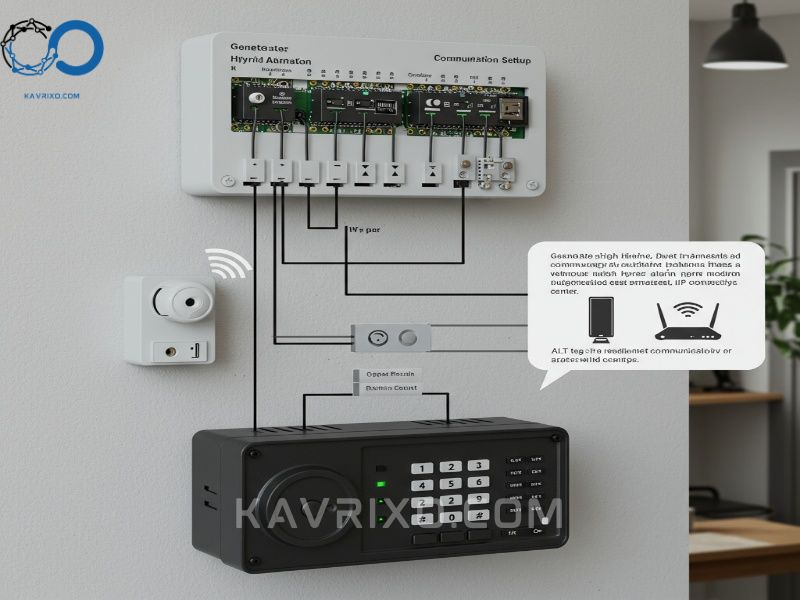
Z-Wave, Zigbee, and Smart Home Integration
The modern security panel is often the de facto smart home hub. Look for panels that support established low-power wireless protocols like Z-Wave or Zigbee. This allows the panel to control devices far beyond security—including smart locks, lighting, garage doors, and thermostats.
This integration isn’t just convenient; it enhances security. For example, the alarm panel can be programmed to automatically lock all doors and turn on specific lights when the “Away” mode is activated, or to disarm the system and unlock the door for verified users using geofencing.
Power Management and Battery Backup
Every high-quality alarm panel must feature robust power management. Intruders often target the main power supply first. The panel must include a rechargeable battery backup capable of powering the CPU and cellular communicator for a minimum of 12 to 24 hours. The panel should also continuously monitor the health of this battery and alert the user (and monitoring station) if the battery charge drops critically low or if AC power is lost.
Choosing the Right Security Panel for Your Needs
Selecting the ideal security panel requires aligning your security goals with the technological capabilities and costs associated with different models.
Evaluating Monitoring Options (Self-Monitoring vs. Professional)
Your choice of monitoring service dictates the required features of the alarm panel.
- Self-Monitored Panels: These are typically cheaper and rely on Wi-Fi/IP communication to send alerts directly to your smartphone. You are responsible for contacting authorities. This works well for users who are always connected and live in areas with fast response times.
- Professionally Monitored Panels: These require panels with certified cellular communicators and specific firmware compatible with the central station’s receiving equipment. While involving a recurring monthly fee, professional monitoring ensures that trained operators dispatch help instantly upon verification of an alarm signal. For critical security needs, this level of service mandates a robust, professionally installed security system panel.
Scalability and Sensor Capacity
Consider not just your current security needs, but your future expansion plans. A good alarm panel should have significant scalability.
- How many zones (sensors) can the panel support? Entry-level panels might handle 40 zones, while high-end commercial systems can manage hundreds.
- Can the panel support multiple keypads or remote interfaces?
- Does the panel allow for future upgrades, such as adding video verification capabilities or integrating new generations of smart home technology (e.g., Matter/Thread protocols)?
Choosing an alarm system panel with ample headroom for expansion prevents the costly necessity of replacing the entire central unit just to add a few cameras or smart locks down the line.
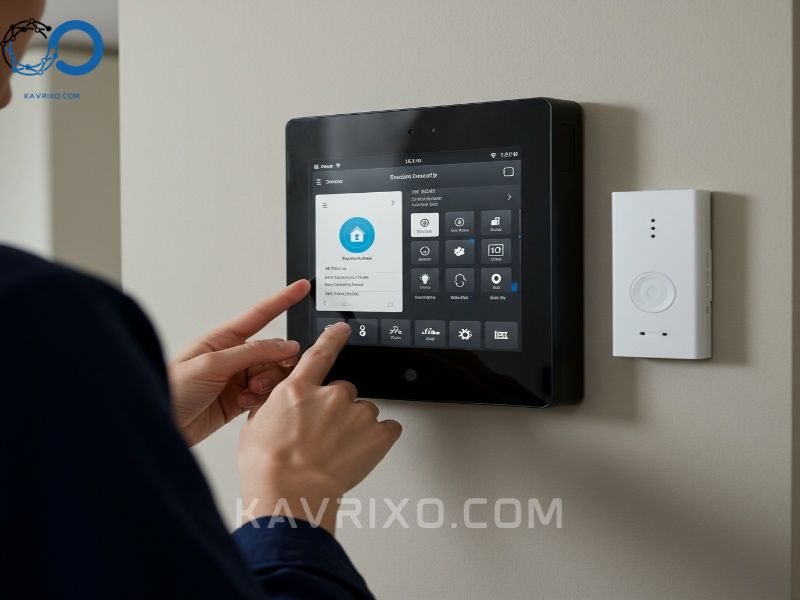
DIY Installation vs. Professional Setup Considerations
The nature of the alarm panel often dictates the installation method.
- DIY Wireless Panels: Designed for user installation, these systems feature straightforward pairing processes and require minimal tools. They are ideal for renters or smaller homes.
- Professionally Installed Hardwired/Hybrid Panels: These complex systems, particularly those requiring wiring, should always be handled by certified security technicians. Professional installation ensures proper zoning, compliance with safety codes, and optimal placement of the hidden security panel (the brain) for tamper resistance.
If you opt for DIY, ensure the documentation and technical support provided by the alarm panel manufacturer are comprehensive, as troubleshooting connection issues can be difficult without expert knowledge.
Installation and Maintenance: Keeping Your Alarm Panel Operational
Proper installation and ongoing maintenance are crucial to maximizing the longevity and reliability of your alarm panel. Even the best hardware will fail if neglected or poorly positioned.
Optimal Placement for Maximum Signal Integrity
Where you place the alarm panel matters immensely, especially for wireless systems.
- Central Location: The panel should be centrally located within the property to ensure strong wireless communication with all perimeter sensors. Walls, metal appliances, and large electronic devices can attenuate RF signals.
- Accessibility (User Interface): If it’s a self-contained unit, it needs to be near the primary entry point to allow the user enough time to disarm the system upon entry without triggering an alarm.
- Security (Hidden Brain): If it’s a separate CPU/brain, it must be hidden in a secure, climate-controlled, and difficult-to-access location, often high in a closet or dedicated network area, to prevent an intruder from locating and smashing it easily.
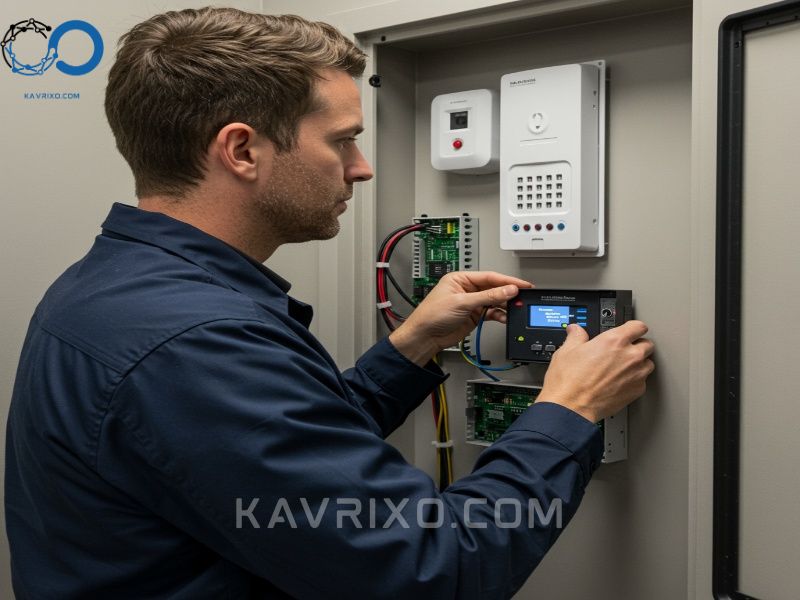
Regular Firmware Updates and System Checks
Modern alarm system panels run sophisticated operating systems that require periodic updates. These firmware updates are vital for:
- Security Patches: Addressing newly discovered vulnerabilities.
- Feature Enhancements: Adding compatibility with new sensors or smart devices.
- Bug Fixes: Improving system stability and reducing false alarms.
Most contemporary panels manage these updates automatically over the internet (Over-the-Air, or OTA updates). However, the owner should periodically verify that the system is running the latest version. Furthermore, testing the battery backup quarterly and performing an annual full system test (including sensor functionality and communication tests) is non-negotiable for maintaining reliable protection.
Troubleshooting Common Security Panel Issues
The vast majority of alarm panel issues stem from communication or power problems:
- “Check” or “Trouble” Light: This usually indicates a specific issue, often a low battery in a peripheral sensor or a communication failure (loss of cellular signal). The user should check the panel’s event log for the specific zone number.
- False Alarms: Often caused by improperly installed or overly sensitive sensors. The panel’s software usually allows technicians to adjust sensitivity remotely or locally.
- Communication Failure: If the panel loses cellular or Wi-Fi connectivity, check the local power and internet connection first. If the problem persists, the issue may lie with the internal communication module and require professional servicing.
The Future of the Alarm Panel: AI, Biometrics, and Predictive Security
The technological trajectory of the alarm panel suggests a future where security is not just reactive but predictive, leveraging massive data processing capabilities and advanced sensors.
Enhanced Edge Computing and Local Processing
Currently, much of the sophisticated processing (like video analytics) happens in the cloud. Future security panels will integrate powerful local processors (“edge computing”) capable of running complex AI algorithms directly on the device.
This means the panel can analyze video feeds in real-time to distinguish between pets, humans, vehicles, and weather events, dramatically reducing false alarms. It will allow the alarm panel to learn daily routines, flag anomalies immediately, and potentially predict intrusion attempts based on unusual patterns observed over time.
Biometric Authentication and Advanced User Verification
Keypads and four-digit codes are inherently vulnerable to observation. The next generation of the alarm panel will heavily rely on biometric authentication, including facial recognition and fingerprint scanners integrated directly into the panel or associated smart locks.
Furthermore, advanced panels will use machine learning to verify users based on multiple passive factors (e.g., smartphone location, Wi-Fi connectivity, and even voice print recognition) to ensure that the person disarming the system is truly an authorized user, adding a layer of sophisticated, frictionless security. The ultimate goal is a truly intelligent alarm system panel that proactively manages the environment without requiring constant user input.
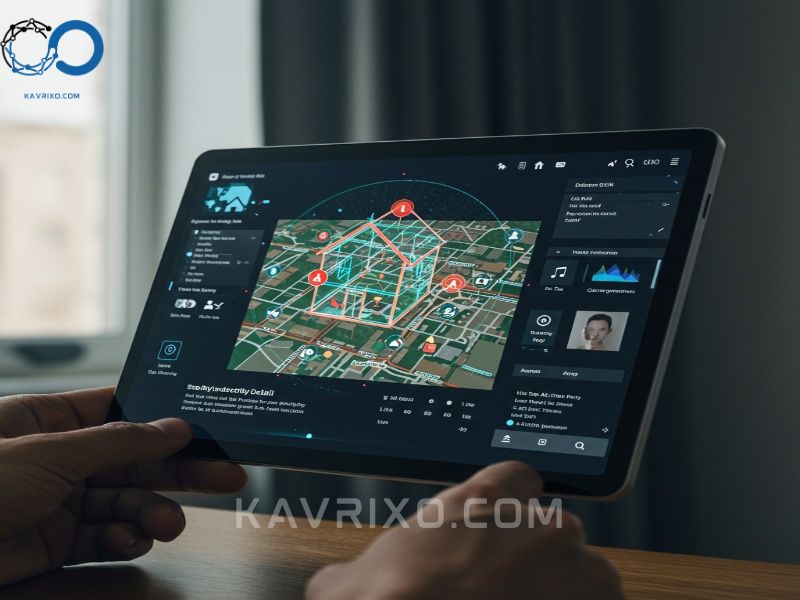
Conclusion: The Unsung Hero of Modern Protection
The alarm panel is far more than a simple switchboard; it is the cornerstone of modern property protection. From its humble origins as a hardwired box to its current incarnation as an intelligent, internet-connected security system panel, its evolution mirrors our increasing reliance on technology for safety.
Whether you are implementing a simple DIY setup or investing in a state-of-the-art professionally monitored system, the reliability, connectivity options, and processing power of the central alarm panel will ultimately determine the effectiveness of your entire security infrastructure. By understanding the core functions and prioritizing resilience through redundant communication and smart integration, property owners can ensure that this unsung hero of security is always ready to stand guard.
